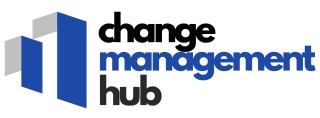-large-teaser.webp)
Defining Cadence in a Business Context
Unpacking Business Cadence
In the business world, the term 'cadence' may bring to mind music, rhythm, or tempo. According to Merriam-Webster, cadence refers to a rhythmic sequence or flow of sounds in language. However, in a business context, it translates to the regular flow and process of activities within an organization. Business cadence often encapsulates scheduled team meetings, project deadlines, and sales cycles that define the rhythm of operations.
The integration of cadence into business operations is pivotal. It helps to synchronize activities across different teams and departments, ensuring that everyone moves in alignment towards common goals. Regularly scheduled meetings, such as weekly team meetings, monthly reviews, or quarterly check-ins, set the tempo for ongoing work. This consistent rhythm improves communication, enhances team collaboration, and ensures a high level of management oversight, all of which are vital in a fluid business environment.
Particularly in the context of revamping procurement strategies, defining a clear cadence can play a critical role. It involves setting patterns for meetings, creating agenda templates, and aligning them with the business’s strategic priorities. Adopting a robust cadence helps in ensuring remote work teams remain connected and productive, especially as remote work becomes a staple across industries.
Implementing an effective business cadence aligns schedules, optimizes time management, and refines the periodic assessment of goals and performance. While it seems straightforward, maintaining this cadence requires attention and commitment. Other sections will explore how cadence ties into change management practices, the hurdles organizations face in maintaining it, and actionable insights to overcome these challenges effectively.
The Importance of Cadence in Change Management
Significance of Regular Cadence in Change Management
In the complex world of business, maintaining a consistent cadence is a fundamental strategy for effective change management. This entails understanding the rhythm at which changes are introduced, communicated, and implemented within an organization. The Merriam-Webster dictionary defines cadence as a rhythmic sequence or flow of sounds or words, which in business, translates to setting a systematic pace for operations and projects. A well-established business cadence, especially in change management, allows for better communication and alignment across teams. For instance, routine team meetings and project check-ins ensure that everyone stays informed and aligned on objectives. Having a defined meeting cadence reduces ambiguity and fosters transparent communication, particularly in remote work settings where team members may be dispersed. Implementing best practices in meeting management is crucial. This includes setting an agenda in advance, sticking to meeting times, and ensuring the agenda template is clear and actionable. This approach not only makes sure meetings are productive but also emphasizes the need for consistency, adaptively aligning with the ongoing changes. A cadence meeting, be it a weekly team meeting or quarterly meetings, serves as a platform where management and teams can review progress, set new goals, and collectively solve any emerging challenges. Regular cadences help in maintaining momentum, preventing projects from stalling, and keeping the team’s focus on key objectives. Additionally, each business cadence, such as a sales cadence, needs to be adapted to the specific rhythms of different departments. The sales cycle, for instance, may require more frequent updates compared to other workflows. If you’re interested in exploring more strategies for managing campaign logistics and effectively coordinating these cadences across your own projects, the article on effective strategies for managing campaign logistics could offer valuable insights on streamlining your processes.Implementing Cadence in Business Strategies
Incorporating Effective Cadence into Business Frameworks
Creating a steady and deliberate rhythm in your business operations can be instrumental in successful change management. To implement an effective cadence, it's essential to focus on structured planning, efficient execution, and regular feedback. A carefully designed cadence aligns teams, ensuring everyone moves in harmony towards shared objectives.- Planning Cadence: First and foremost, setting a clear agenda template is crucial. At the heart of implementing cadence is the establishment of structured team meetings. These meetings can vary, from weekly check-ins to quarterly meetings, as the nature of the business demands. Scheduling regular team meetings with set agendas helps in maintaining focus and driving progress. This can include weekly updates, monthly reviews, and even daily check-ins in a high-paced environment.
- Execution of Cadence: Once the cadence is outlined, the next step is to execute it meticulously. This involves ensuring that each team member is aware of their roles and the expected outcomes. Clear communication is key, especially in remote work setups. This helps eliminate bottlenecks, ensuring that meetings start on time and stay within the allocated time, respecting every team member's contributions. For more insights on maintaining this structure, see our detailed exploration of agile capital factoring in change management.
- Feedback & Improvement: A dynamic business cadence is more than just routine; it requires ongoing assessment and adaptation. Following each cadence meeting, it's beneficial to assess the outcomes and gather feedback. This evaluation helps in refining the meeting agenda for future sessions. Introducing a sales cadence allows teams to adapt plans based on performance metrics and client feedback. This continuous improvement fosters a learning environment where teams can thrive and project management becomes more efficient.
Challenges in Maintaining Cadence
Overcoming Barriers in Sustaining Consistent Cadence
In the realm of business cadence, maintaining a consistent rhythm of operations presents several challenges. Organizations often struggle with sustaining an effective cadence due to internal and external factors. Addressing these challenges requires strategic focus and attention.- Misalignment in Team Communication: One key hurdle is ensuring effective communication among team members. Misalignment can occur when teams are unclear about the cadence set for regular meetings or project progress check-ins. Best practices highlight the need for clear communication channels and a well-defined meeting agenda to facilitate coherence.
- Remote Work Dynamics: The shift towards remote work has added complexity to maintaining a steady cadence. Remote teams may experience difficulties in setting up regular team meetings due to differences in time zones or unpredictable schedules. To address this, organizations can implement flexible meeting times and leverage digital tools to streamline communication and facilitate seamless collaboration.
- Inconsistent Meeting Cadence: Inconsistencies in meeting cadences, such as fluctuating weekly or monthly meetings, can derail business operations. Establishing a consistent meeting cadence ensures all team members are on the same page, which drives project management success and aids in the sales cycle.
- Resistance to Change: Another common challenge is resistance to change among team members. Implementing a new business cadence often requires a shift in mindset and can disrupt existing habits. Overcoming this resistance involves securing buy-in from all stakeholders, setting clear expectations, and providing necessary training and support.
- Balancing Agility and Growth: Organizations must strike a balance between maintaining a stable cadence and being agile enough to adapt to changing demands. This balance is crucial to foster growth while ensuring business operations run smoothly.
Case Studies: Successful Cadence in Action
Real-World Examples of Business Cadence Success
Understanding the critical role of cadence is best achieved by observing its effectiveness in real-world scenarios. Let's delve into a few cases that highlight how businesses have successfully implemented cadence to enhance their operations.
- Tech Firm's Agile Approach: A prominent tech company transformed its remote work challenges into strengths by implementing a cadence that synchronized team meetings across different time zones. Through regular weekly check-ins and strategic alignment sessions, team members were able to maintain seamless communication and project progress. This cadence not only helped them meet deadlines but also fostered an environment of innovation by establishing clear communication pathways among remote teams.
- Retailer's Seasonal Sales Cadence: In the retail sector, one company revolutionized its sales cycle by setting up a quarterly sales cadence that aligned with seasonal demands. By tailoring their meeting agendas to focus on upcoming trends and customer feedback, the company managed to stay ahead of market trends and enhance their product offerings. Their strategic planning involved monthly meetings that monitored sales performance and allowed team members to adapt strategies quickly, improving overall sales and customer satisfaction.
- Project Management in Manufacturing: For a manufacturing business, implementing a precise business cadence in their project management protocols proved invaluable. They established regular cadences for production updates and quality assessments, creating a rhythm that improved efficiency and reduced discrepancies in operations. By adhering to a disciplined meeting schedule, they empowered their teams to execute projects more effectively and respond promptly to any arising issues.
These examples demonstrate that maintaining a consistent cadence, whether through team meetings or strategic planning sessions, can significantly enhance operational efficiency and drive business success. Each business, through unique approaches, has utilized cadence to create a structured work environment, improve team communication, and align business strategies with their overarching goals.
Tools and Techniques for Establishing Cadence
Tools and Techniques for Maintaining Effective Cadence
Establishing a successful cadence in business operations often requires a combination of the right tools and techniques. Whether working with a local team or managing remote teams, these elements play a crucial role in sustaining fluid communication and ensuring that project objectives are met efficiently.- Meeting Management Software: Platforms like Slack, Teams, or Zoom facilitate seamless communication in daily check-ins or weekly and monthly meetings. These tools help streamline meeting time and agendas, making sure discussions stay on track.
- Agenda Templates: Pre-set agenda templates ensure that meetings have a clear purpose and structure. They allow team members to prepare relevant information and contribute effectively during discussions. This practice is instrumental in maintaining a productive meeting cadence.
- Project Management Tools: Tools like Asana, Trello, or Monday.com provide a centralized space for tracking progress and assigning tasks. They uphold a steady business cadence by keeping projects organized and aligned with their goals.
- Automation Tools: Automating recurring tasks can free up essential time for team members to focus on more critical aspects of the sales cycle or business operations. This technology alleviates pressure on teams, ensuring each day is optimally productive.
- Routine Check-Ins: Regular check-ins through virtual or in-person meetings help maintain effective communication. Implementing consistent weekly and quarterly meetings ensures teams remain aligned with the company's goals and can address any issues promptly.
- Sales Cadence Systems: A structured sales cadence can guide sales teams through each phase of a sales cycle, providing clarity and focus. This ensures efforts are consistent across all team members, leading to better sales management outcomes.
- Communication Cadence: Strong communication lines are vital in any organization. Encouraging open and regular feedback through various platforms helps in promptly addressing challenges and encouraging a synchronized team effort.













